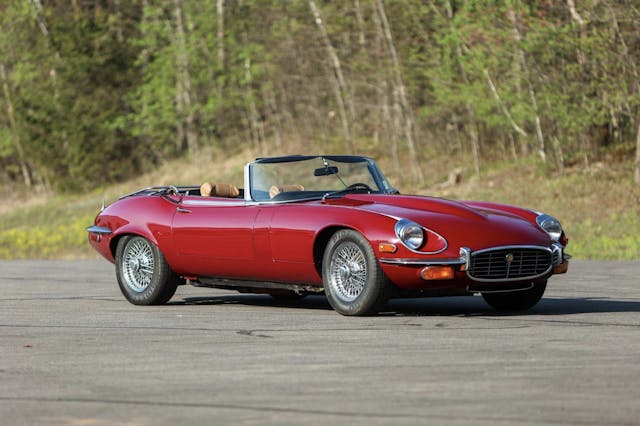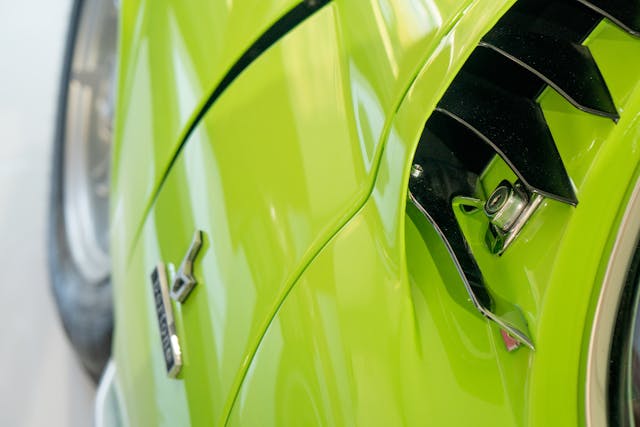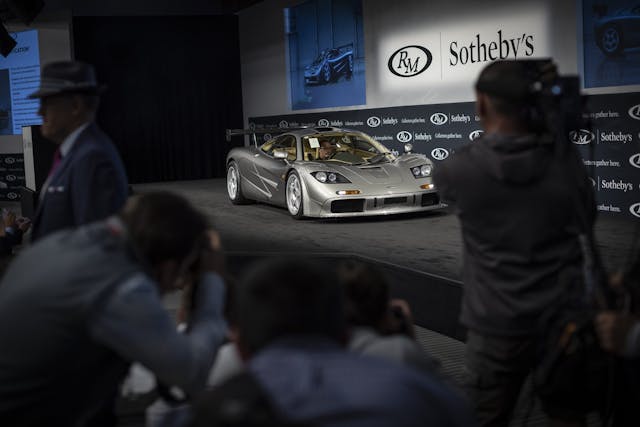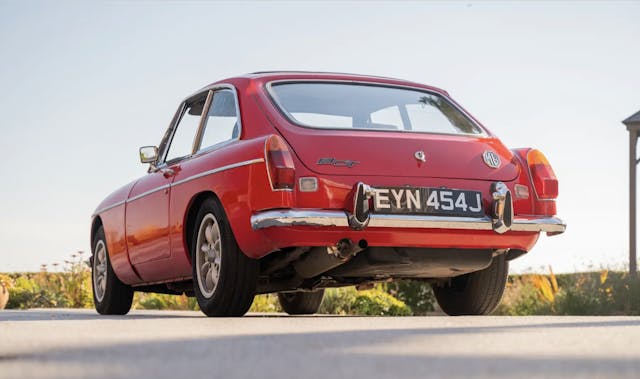A Tale of Two Collector Car Markets
It’s a strange time in the United Kingdom—and not just because we have a new monarch for the first time in 70 years. Whatever your politics, most people agreed that the last Prime Minister, Boris Johnson, presided over a period of chaos that included Brexit, COVID, and eventually his removal by his own party. Chaos is never good for an economy, and it certainly has not been for ours: The Organization for Economic Cooperation and Development (the OECD) predicted in June that the UK would see the lowest rate of growth in the G20 group of nations with the exception of Russia. This summer, the cost of living hit home hard, with petrol hitting £2 per liter—or over $9.08 per gallon—and the previously-capped costs of electricity and household gas rising to an average of around £2,000 per year ($2,362) up 54 percent in a year.
All this made for a complicated backdrop as I published the latest UK Hagerty Price Guide (our 29th edition, if you’re keeping count). Whereas the collector car market in the United States has largely defied gravity, here we’re seeing the market splitting, as economic pressures and incentives work differently on middle- and upper–class collectors.
Tumult for affordable classics

Hagerty’s Classic Index tracks 50 classic cars that are representative of the British enthusiast market. Most are relatively numerous and affordable. In the past 12 months, the Classic Index has risen by 3 percent overall, which seems rather steady; however, this a classic case of an average being deceiving. In fact, there’s a huge amount of change, with some cars moving upwards a lot, others significantly down.
Those moving down include the Jaguar E-Type SIII roadster, which fell by an average of 9 percent and the Audi Quattro Ur (RR) that fell by 5 percent. Both of these cars had previously risen steeply in value, and this was more of a correction than the start of a trend that Hagerty expects to continue. Similarly, Volkswagen Type 2 (Split-window) values, which rose as a “staycation” opportunity during the pandemic shutdowns, fell 18 percent in the year.
Those that increased most are a diverse bunch, including some well-known classics such as the ever-popular MGB GT (up 16 percent), the Mazda MX5 (up 11 percent) and the Rover SD1 3500 Vanden Plas, up a huge 23 percent, although it started from a relatively modest £5,500 ($6360).
These are seemingly big rises, but they must be placed in context. According to the Office for National Statistics, inflation rose 8.8 percent in the year to July 2022. Only eight of the 50 cars in the Classic Index increased more than this, the remainder effectively losing value in real terms. Given the economic uncertainly and cost of living crisis, it is not surprising that the demand for many enthusiast classics seems to have subsided, for now.
Things still look good from the top

Economic pressures don’t seem to be hampering the top echelon of car collectors. Hagerty UK’s list of thirty exclusive classics, known as the Gold Index, has risen by an average of 17 percent over the year. It includes such cars as the Ferrari 250 GTO, the BMW 507 and the Ford F40.
Like the Classic Index, some cars have increased dramatically in value and others reduced in price. Those losing value tend to be older, more traditional classics: the Aston Martin DB5 Vantage Drophead is down by 13 percent and the Maserati 3500 GTi Spider down 18 percent. One 1950s car that has bucked this trend is the Mercedes-Benz 300SL ‘Gullwing’ coupe, which has risen by 35 percent in the year following a host of very strong sales both at auction and privately. Following the record sale of the 300 SLR ‘Uhlenhaut’ coupe (to a prominent British collector, if rumors are to be believed), U.S. Hagerty Price Guide publisher Dave Kinney wondered if “ordinary” 300SLs might benefit from the association. That indeed seems to be happening.
Top 1970s cars have also done extremely well: Dino 246 GTS values have risen by an astonishing 89 percent in the year, Porsche 911 2.7RS up by 37 percent, and Lamborghini Miura P400SV values by 29 percent. Dino and 2.7RS values had previously dipped a little, so this is a regain (and then some), but Miura values have been increasing for some time and this is the continuation of an upward trajectory.
Modern classic ‘Halo’ cars are outperforming everything.

However, the most significant group of rising stars are the modern classic supercars. The McLaren F1 is up 20 percent year-on-year, an impressive feat for a car whose average value in the UK is now a huge £15,225,000. In percentage terms though, it’s the Ferraris that are leaving the others for dust: F40 average values have almost doubled in 12 months (97.6 percent increase), 288 GTO values are up by 71.4 percent and F50 up by 46.7 percent. Note that these gains don’t necessarily reflect sales within the UK. One of the insulating factors for these high-dollar cars is the fact that they are traded globally. However, the value gains will be more acutely felt by British buyers, given how significantly the exchange rate has changed in the last twelve months. In September 2021, it was $1.38 to the GBP, today that’s $1.17.
So, what’s going on?
For the time being, Hagerty in the UK sees a split market: The very economic pressures that might discourage collectors of average means might incentivize those who can buy expensive collector cars.
With most forecasts placing inflation in the UK at around 10 percent in the next 12 months and all predictions pointing towards rising interest rates, many collectors will find themselves with less money to pour into cars. Yet for those with the means—or the ability to borrow at relatively low fixed rates—those same factors make this a very wise time to add to the garage. Cars are easy to buy, in the UK attract no capital gains tax, and are easy to sell if you need to. These cars are perceived as the new gold bars, and the very best examples—the correct spec, original, low-mileage or perfectly restored—are seen as great investments.
At least, that’s how it all looks right now. More than ever, things are moving quickly. In the last ten days, a new Prime Minister, Liz Truss, has been sworn in and immediately fixed household energy prices. Then, Queen Elizabeth II died. Strangely, this seems to have had a calming effect. At times like this, the British often retreat to the traditions of our ancient country, and somehow it seems to have brought us together. Will this calm these turbulent waters? I believe it may, just a little.
__
John Mayhead is publisher of the UK Hagerty Price Guide
***
Check out the Hagerty Media homepage so you don’t miss a single story, or better yet, bookmark it. To get our best stories delivered right to your inbox, subscribe to our newsletters.


